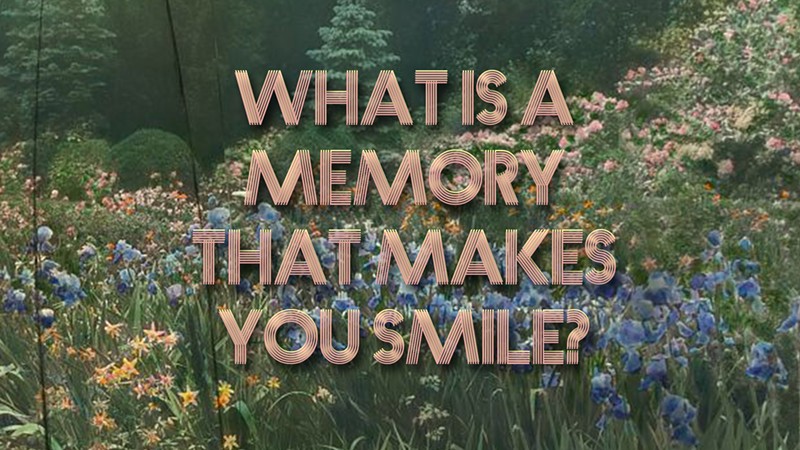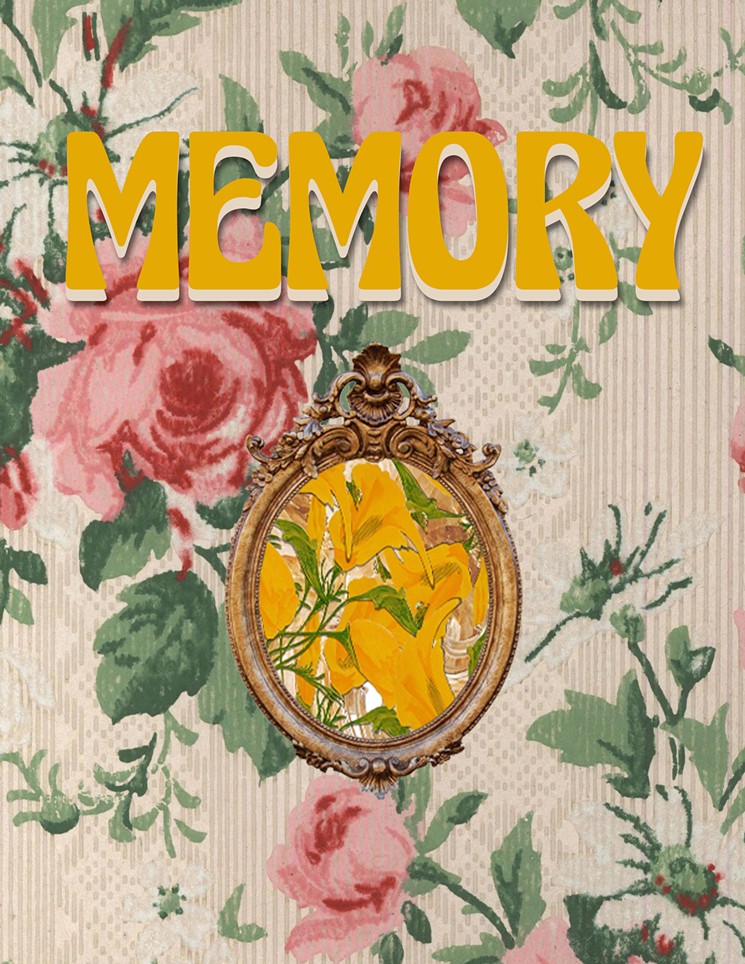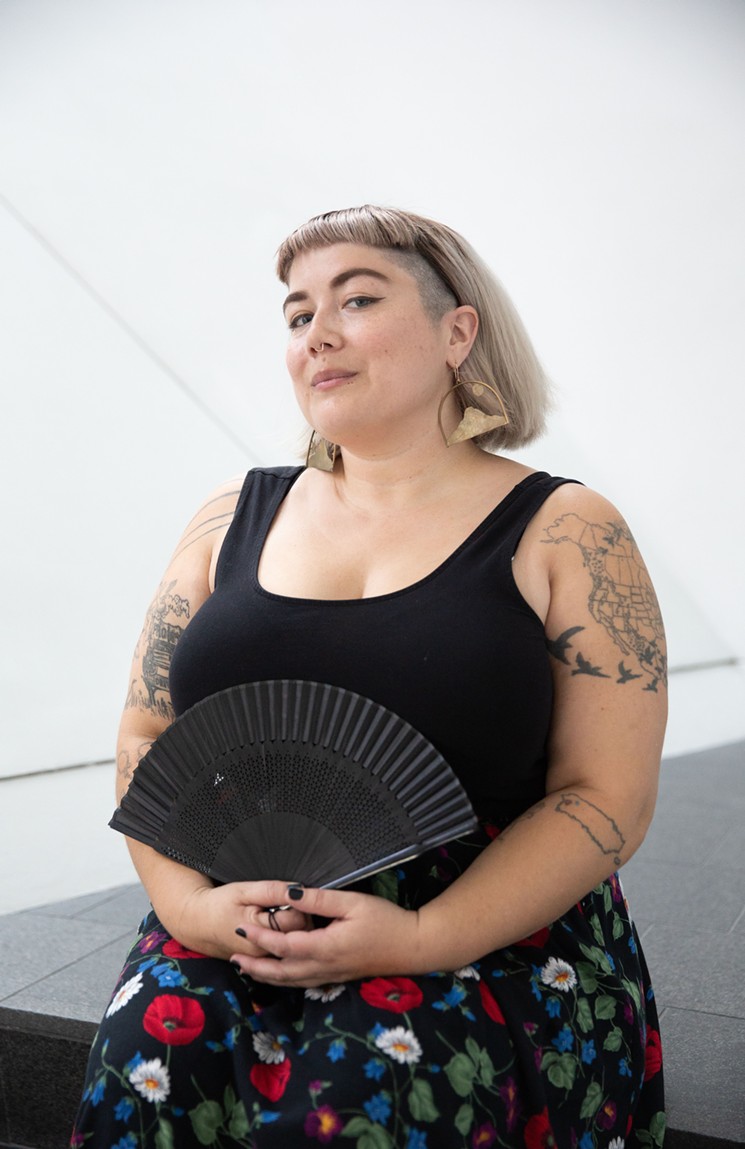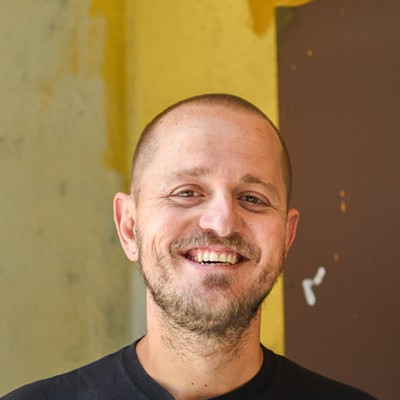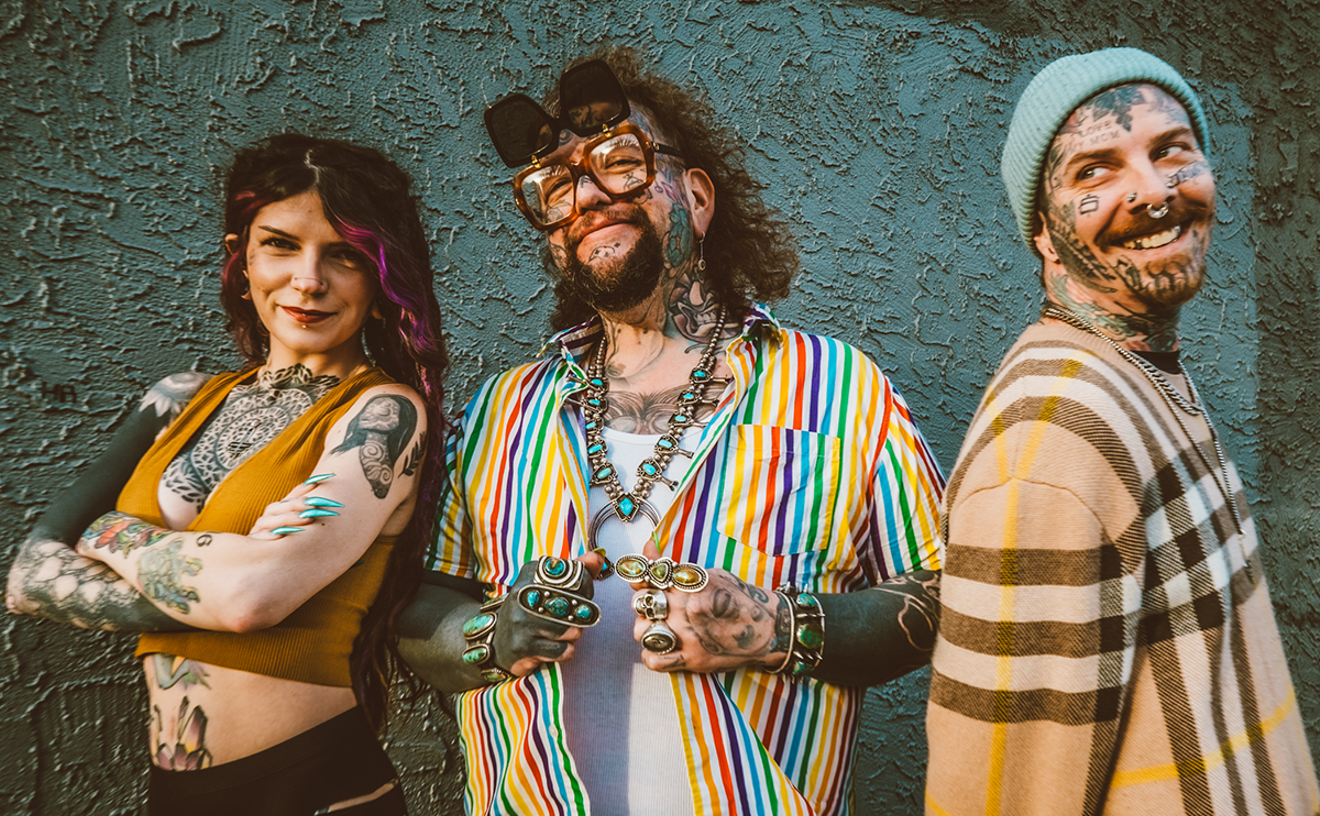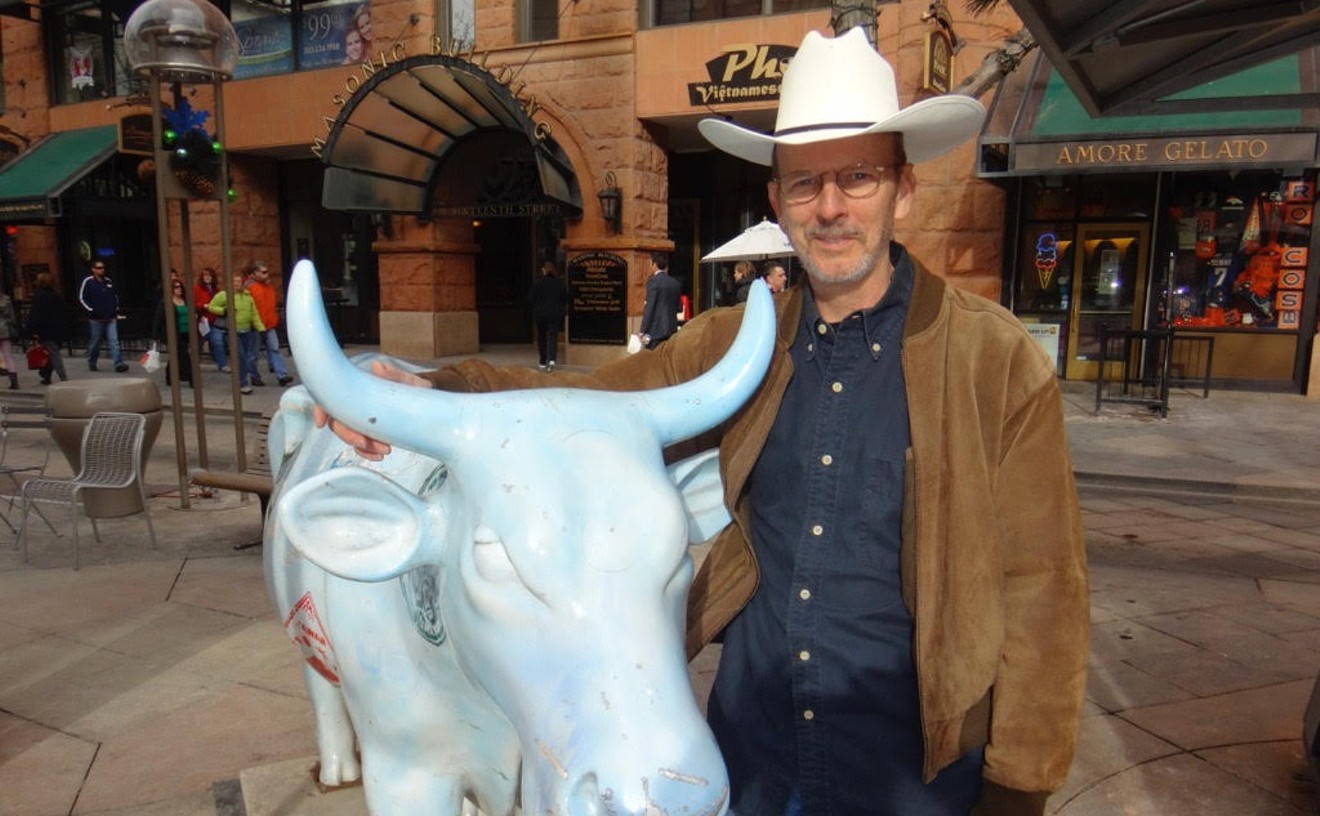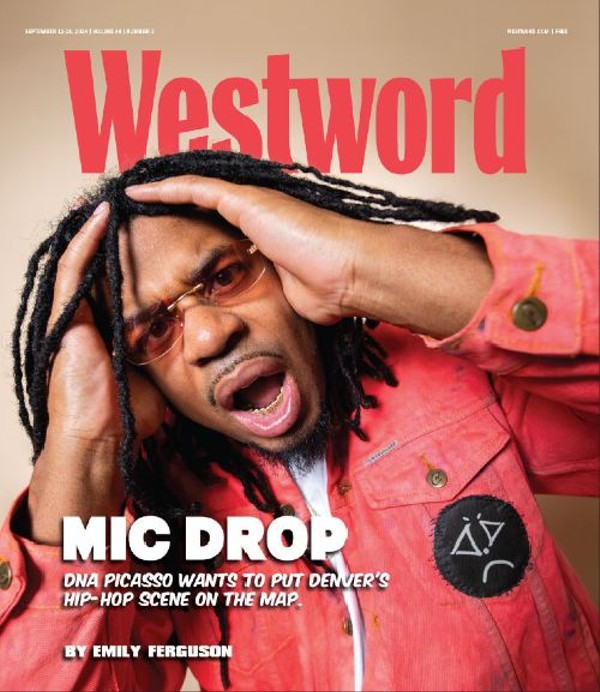As Denver artist Lares Feliciano preps for Memory Mirror, her summer installation at the Denver Art Museum, she wants to know — and collect — what you remember.
"What is a memory that you hold dear?" she wonders. "What is a memory that makes you smile? What is a memory you share with someone else but remember differently? What is your first memory? What is a memory you associate with your identity?"
Feliciano plans to incorporate your answers to these questions — and perhaps objects from your life — into the show, which opens in July. To learn more, Westword caught up with the artist to talk about the installation, her obsession with memory and what she's looking for from you.
Westword: I think the last time we spoke was when "a prayer" screened at the Clyfford Still Museum. What have you been up to, and how are you handling this year?
Lares Feliciano: Like many, I have been struggling this past year, juggling pandemic anxiety and all that comes with it. I am still busy despite all the shifts that have happened, with several exciting projects in the works. But the busy energy I had in the Before Times has totally changed. I am still making and creating, but if I am being honest, it is harder than ever to stay energized and motivated. Zoom fatigue is real, and living almost fully online is hard on the body and mind. Also, this pandemic has unearthed a lot of grief and trauma that I realize I have been carrying for most of my life. The pandemic has really forced me to face and work through a lot of those things. I am so grateful for art and therapy for helping me muddle through it all!
Talk about Memory Mirror: Give us a sneak peek! What is it? What are your plans?
I am so excited about this project! Memory Mirror is an immersive installation that invites visitors to explore their relationship with memory through animation, dioramas and interactive storytelling. Opening in July, Memory Mirror will transform the Denver Art Museum's Precourt Family Discovery Hall into a surreal domestic den made up of memories donated by the community.
I am asking community members to donate their memories as well as objects and images associated with those memories. Maybe it’s a toy figurine from childhood, a vacation souvenir or part of an old pocket watch. Or maybe it’s your grandma’s yearbook photo, an old ticket stub or your school play program. Or maybe it’s simply an audio recording of you telling the story of your memory. Through both in-person events and a virtual submission process, I will be collecting all these elements and including them in the completed installation. Everything from the wallpaper, to the dioramas, to the animation and soundscape will be imbued with the community’s collective memories. My hope is that the completed installation will itself feel like a memory.
What's your interest in memory? What's your relationship to it?
I've always been fascinated with memory and the ways it informs how we experience the world. Archives, yearbooks, family ephemera and vintage encyclopedias — I am drawn to materials that act as shadows of the past I can build new worlds around. As a result, my work often evokes a dreamlike nostalgia where decades overlap and all of time exists at once.
Memory helps us to delineate time, communicate, build relationships and create meaning. But as much as we rely on memory to build our sense of self, it is a notoriously imperfect processor. Memory is not so much a record as a reflection, impacted by emotion, experience, time and bias. Our memories shape us, and we in turn shape our memories.
This past pandemic year demonstrates the ways that time and memory interact. Normally we use memory to delineate time. Your co-worker may say, “Oh, yes, I sent you that document right around the time of the April fundraiser.” But this year the April fundraiser didn’t happen as usual, nor did the summer BBQ, the graduation party or the Thanksgiving family reunion. Without these memories to help us mark time, we are left swimming in a sea of days and months that blend together. It’s no wonder that during this pandemic a common question is, “What day is it?”
Memory also helps to process trauma and grief, two experiences we are seeing more and more of as the pandemic drags on. But our ability to work through these feelings is hindered by our isolation. Memories with others that help us make sense of our experiences are few and far between, causing our collective experience of grief to be even more muddied. It is my hope that sharing our individual memories in this collective manner will help us feel some connectedness in a time that is so disconnected.
Finally, my interest in memory is also connected to my own experience of grief and loss. When I was eight years old, my father was diagnosed with early-onset Alzheimer’s, a disease of the brain that affects memory. He was sick for eight years and died when I was sixteen. I watched as the loss of memory changed who my father was. As a result, I have come to appreciate the value of memory and the connectedness it brings. Memory is precious and should be celebrated and savored.
Domestic spaces have been a recurring theme in your recent work. Can you talk about why that is and what living rooms mean to you — particularly as sites of politics and memory?
I love this question! Growing up, I think I idealized the living room as the backdrop to the perfect American family. I was raised on Full House, Family Matters and the whole TGIF lineup. My family felt far from perfect, and sitcoms set around that pristine floral living room provided me with a romanticized escape.
While I think we can agree that sitcoms are far from realistic, I’d say one thing they get right is the importance of the living room. So much happens in our living rooms. The living room is where potlucks spill over, where apologies are made, and where kids come out to their folks. It is a site of joy, pain, celebration and grief. In my family, the living room was the site of family meetings, impromptu performances and tough conversations. Historically, the living room has also been a site of community building and resistance, extending the definitions of family and kin. I see the living room as a space of possibility and love.
And then, of course, there is the pandemic experience of living rooms. This past year, our living rooms have also become our offices, classrooms, art studios and gyms. The living room has become the center of our worlds and is the perfect setting for our collective memories.
The public can get involved. How can we participate, and what, exactly, are you looking for from people?
Yes — I am looking for memory donations from the community. This spring I will be hosting two special drop-in events at the Denver Art Museum, inviting visitors and community members to contribute stories, images and objects that represent their own memories. These Memory Collection events will occur on March 27 and April 25. Both are free days at the DAM, and a ticket reservation is required. Museum visitors can drop by the Hamilton Studio any time from 11 a.m. to 3 p.m. to contribute.
Visitors can bring an object the size of their palm or smaller, a physical photo or piece of ephemera (a ticket stub, theater program, handwritten letter, etc.), or just their memories. I will be there to record guests as they tell the story of their memory. I’ve got a set of prompts to help get the memory wheels turning, and encourage folks to think ahead about what memory they might want to contribute.
Contributed objects will be donated permanently. Physical photos and ephemera will be photographed in hi-res and returned immediately. I recommend checking out the FAQ on the DAM’s website for more details about object and image submissions. Also, a digital submission process is in the works, so stay tuned! And thank you in advance for sharing your memories with me!
For more information about Memory Mirror, go to the DAM website.

Audio By Carbonatix
[
{
"name": "Air - MediumRectangle - Inline Content - Mobile Display Size",
"component": "12017618",
"insertPoint": "2",
"requiredCountToDisplay": "2",
"watchElement": ".fdn-content-body",
"astAdList": [
{
"adType": "rectangle",
"displayTargets": "mobile"
}
]
},{
"name": "Editor Picks",
"component": "17242653",
"insertPoint": "4",
"requiredCountToDisplay": "1",
"watchElement": ".fdn-content-body",
"astAdList": [
{
"adType": "rectangle",
"displayTargets": "desktop|tablet"
},{
"adType": "rectangle",
"displayTargets": "desktop|tablet|mobile"
}
]
},{
"name": "Inline Links",
"component": "18838239",
"insertPoint": "8th",
"startingPoint": 8,
"requiredCountToDisplay": "7",
"maxInsertions": 25
},{
"name": "Air - MediumRectangle - Combo - Inline Content",
"component": "17261320",
"insertPoint": "8th",
"startingPoint": 8,
"requiredCountToDisplay": "7",
"maxInsertions": 25,
"watchElement": ".fdn-content-body",
"astAdList": [
{
"adType": "rectangle",
"displayTargets": "desktop|tablet"
},{
"adType": "rectangle",
"displayTargets": "desktop|tablet|mobile"
}
]
},{
"name": "Inline Links",
"component": "18838239",
"insertPoint": "8th",
"startingPoint": 12,
"requiredCountToDisplay": "11",
"maxInsertions": 25
},{
"name": "Air - Leaderboard Tower - Combo - Inline Content",
"component": "17261321",
"insertPoint": "8th",
"startingPoint": 12,
"requiredCountToDisplay": "11",
"maxInsertions": 25,
"watchElement": ".fdn-content-body",
"astAdList": [
{
"adType": "leaderboardInlineContent",
"displayTargets": "desktop|tablet"
},{
"adType": "tower",
"displayTargets": "mobile"
}
]
}
]

